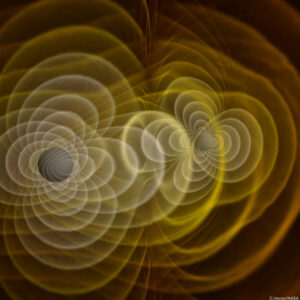
Perhaps you’ve heard news about the discovery of “gravitational waves?” About how a team of scientists discovered the sound of two black holes colliding a billion light-years away, and how that discovery confirmed renowned physicist Albert Einstein’s theory of relativity? In case you don’t know what any of this means, this post is going to give you what you need to know to look super smart around your friends.
So, What Happened?
Back in 1992, a joint project between scientists at multiple colleges (notably the California Institute of Technology (Caltech) and Massachusetts Institute of Technology (MIT)) was formed. It was called the Laser Interferometer Gravitational-Wave Observatory (LIGO). The purpose of the project was to detect gravitational waves, ripples of gravity caused by a disturbance in the cosmos. The National Science Foundation (NSF) funded the project to the tune of more than a billion dollars. Two labs were built—one in Livingston, Louisiana and the other in Hanford, Washington—and equipped with lasers with beams that stretched for more than two miles.
On September 14, 2015, at approximately the same time, the lasers at both labs experienced a “strain in space-time.” This meant that scientists were able to hear and record the collision of two black holes that happened 1.3 billion years ago. This event provided the first actual evidence of the existence of gravitational waves, which Einstein had theorized and predicted 100 years before but was only able to record it on paper. As a result of the experiment, the team at LIGO wrote a report called, “Observation of Gravitational Waves from a Binary Black Hole Merger” and it was published in a periodical called Physical Review Letters.
Einstein’s Role

To understand what Einstein discovered about gravity, it is important to understand what scientist, Sir Isaac Newton had discovered 200 years before Einstein. Newton believed that gravity was a force of attraction between objects, and that was the general belief system for many years. Einstein, on the other hand, believed that space (which was three-dimensional) and time (one-dimensional) were bound together in what he called space-time. In 1916, Einstein published a paper explaining that gravity was, instead, a distortion in this fabric of space and time. He called the new view of gravity the Theory of General Relativity.
As part of his discovery, Einstein theorized that a massive disturbance in space would produce ripples. But the technology to prove such a theory did not yet exist. That is where the LIGO project came in. Their extremely sensitive equipment was able to detect the passing gravitational wave as a flicker of light that they were able to turn into a sound wave, an echo of the collision of the two black holes. The fact that both labs, located across the country from one another, detected the same disturbance, suggested that the finding was not an error. Since last September, scientists have been checking and rechecking the data to make sure they were getting it right before announcing the confirmed discovery to the public last week.
